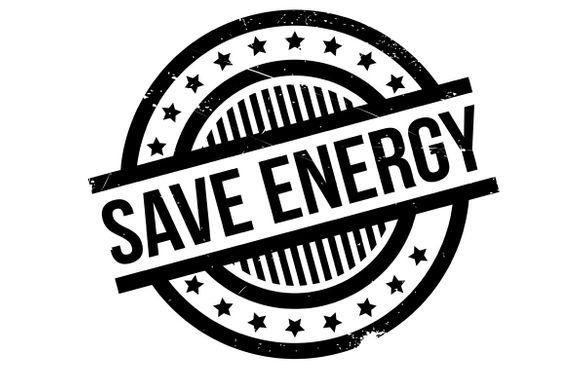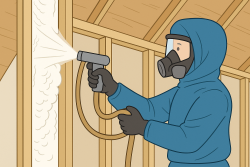While cooling, heating, lighting, and power certainly come with a price, saving money on your monthly energy bill might not be as difficult as you think. Follow these eight easy steps to start cutting costs and saving energy.
1. INSULATE YOUR HOME
It is estimated that insulating a home can improve energy efficiency by as much as 60%! At today’s energy costs the payback on such an investment could be very short indeed, and any savings after that is money in your pocket! Added benefits are improved comfort, both temperature wise and sound wise. Don’t forget the possible increase of property value for doing this valuable upgrade which could further recoup any cost of the initial investment.
2. MAINTAIN HEATING AND COOLING SYSTEMS
Your heating and cooling systems keep your home comfortable all year long. However, if they aren't properly maintained, they can cost more than they should. While you don't need to disable your A/C or furnace to save money, you can take certain steps to ensure they run as efficiently as possible.
To start, check your air filters frequently and change them as needed, probably every few months. This will keep the air in your home clean and prevent your HVAC system from working too hard. Invest in seasonal maintenance to properly prepare each appliance for upcoming weather.
Check that your air vents aren't blocked or shut. Instead of saving you energy, shutting your vents increases your bill by forcing your furnace or air conditioner to work harder.
Finally, lower your thermostat during the winter and raise it during the summer. Even incremental degree changes can have a significant effect on your bills.
3. NATURALLY CONTROL INDOOR TEMPERATURES
While maintaining your heating and cooling systems for efficiency is essential, you can also decrease their workload by heating and cooling your home naturally.
Start with your blinds: lower them to cool rooms during the summer, and raise them to heat rooms during the winter. You can also strategically plant trees and shrubs around your home to create natural summer shade.
Open your interior doors to increase airflow. Instead of working hard to heat or cool each room individually, the airflow will push the warm or cold air throughout your home.
Invest in rugs during the winter. Use them to cover bare wood or tile floors, which tend to feel cold causing you to want to turn up your heat a notch or two!
4. USE LESS POWER
To trim your power usage, unplug any devices not in use, such as your TV or DVD player. Turning them off is a good start, but leaving these devices plugged in results in a phenomenon called phantom load or vampire power: when your devices are plugged in to the wall, they continue to siphon electricity even if they're shut off. Use power strips to shut off the electrical current to several electronics at once.
Remember to turn off your lights before leaving a room. You should also turn off your kitchen or bath fans after leaving the room to save electricity.
5. REPLACE LIGHTS
Exchange your current light bulbs for energy-efficient bulbs. These bulbs cast more light without using as much energy. Similarly, invest in compact fluorescent lamps outdoors; they also consume less electricity.
Use dimmable lights to use just the right amount of light for a room—you don't need maximum light capacity in every room. You can also install skylights in certain rooms to use natural light to brighten the room during the day.
6. INVEST IN ENERGY STAR APPLIANCES
Purchase appliances with Energy Star labels. These high-efficiency products use less electricity without sacrificing quality. Natural Resources Canada promotes Energy Star products; in many instances, you can save money with tax credits for Energy Star products. Visit Natural Resources Canada to learn more.
7. CONSERVE WATER
Per capita, the average Canadian uses 329 litres of water for domestic purposes. Using less water saves you more in the long run, and conserves our nation's fresh water. Try these tips to save water and money:
- Wash only full laundry and dishwasher loads.
- Use low-flow faucets in sinks and showers to reduce your water load.
- Wash clothes in warm or cold water, not hot water.
- Take shorter showers, or turn the shower off completely while shampooing your hair.
- Some toilets use as much as 20 litres per flush. Install a low-flush toilet to save water.
8. SEAL LEAKS
Your home loses a surprising amount of energy through leaks in the windows and doors. Repair and seal leaky ducts with duct mastic, a water-based acrylic sealer, or consider replacing your windows with energy-efficient windows. Seal any holes or leaks in windows to prevent cold drafts from entering your home. This will also keep cold air in during the summer and hot air in during the winter.
When it comes to energy, the little things matter. Something as small as turning off the lights or using your ceiling fans can make a big difference. Use these tips to save money and help the environment. Your family, your wallet, and the environment will thank you.

















